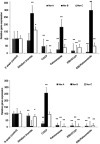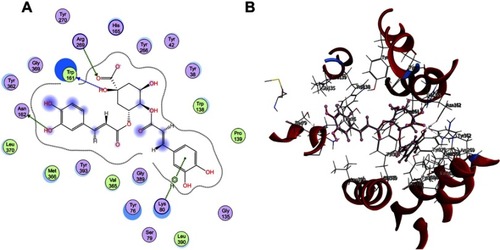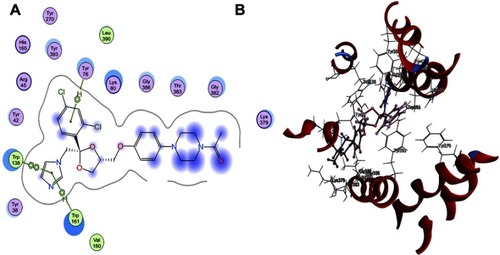Figures & data
Table 1 Resistance pattern of the tested Staphylococcus aureusstrains
Table 2 Primer sequence of the tested genes
Table 3 MICs/MBCs (µg/mL) of norfloxacin, levofloxacin, and ciprofloxacin alone and in combination with CCCP or ketoconazole for the tested bacterial isolates
Table 4 Average of zone inhibition diameters of the tested antibiotic discs with and without ketoconazole or CCCP
Figure 1 Antibiotic–EPI disc synergy test using antibiotic discs combined with CCCP or ketoconazole as EPIs. (A) Antibacterial activity of methanol (used for dissolving CCCP), of dimethyl sulfoxide (DMSO) used as a solvent for ketoconazole, of CCCP, and of ketoconazole (each alone). (B) Norfloxacin (NOR)-sensitive Staphylococcus aureusshowing no change in zone diameter in combination with ketoconazole. Addition of CCCP to antibiotic disc showed an increase in zone diameter due to its antibacterial activity. (C–E) CCCP and ketoconazole increase the activity of the tested antibiotics. (F) Effect of ketoconazole on the addition of ceftriaxone (CRO), oxacillin (OX), and amoxicillin/clavulanic acid (AMC) discs.
Abbreviations: CCCP, carbonyl cyanide m-chlorophenylhydrazone; FOX, cefoxitin; KET, ketoconazole; LEV, levofloxacin.
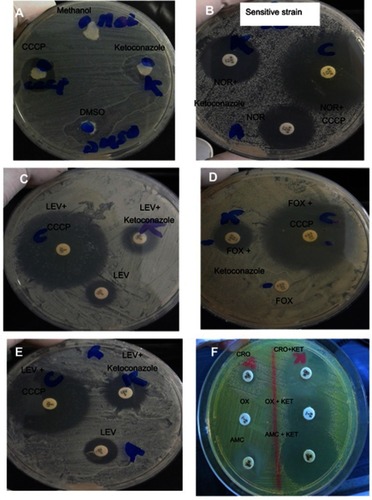
Figure 2 Effect of the tested antibiotic (levofloxacin) alone or in combination with ketoconazole or CCCP on the accumulation of ethidium bromide by Staphylococcus. aureus ATCC 6538 and S. aureus R strain. Data represent the mean±SD of two different experiments performed in triplicate. **Highly significant, P<0.001 (Student’s t-test).
Abbreviation: CCCP, carbonyl cyanide m-chlorophenylhydrazone.
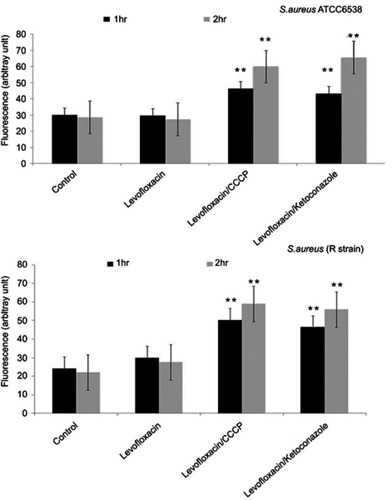
Figure 3 Time-kill curves of levofloxacin against two MDR Staphylococcus aureus strains: (A) R strain and (B) 5ʹ strain. (G) The sensitive strain levofloxacin+CCCP (½×MIC) against R strain (C) and 5ʹ strain (D). (H) The sensitive strain and levofloxacin+ketoconazole (500 µg/ml) against (E) R strain and (F) 5ʹ strain.
Abbreviations: CCCP, carbonyl cyanide m-chlorophenylhydrazone; CFU, colony forming unit; LEV, levofloxacin; MIC, minimum inhibitory concentration.
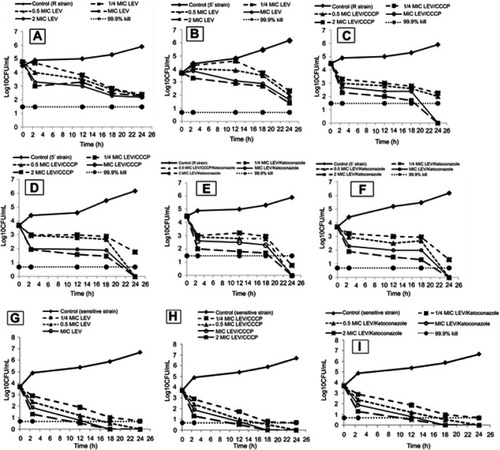
Figure 4 Inhibitory effect of ketoconazole and levofloxacin each alone and in combination (using different concentrations of levofloxacin) on biofilm formation by the tested Staphylococcus aureus strains. (A) Effect of ketoconazole, ¼×MIC of levofloxacin each alone and in combination. (B) Effect of ketoconazole, ½×MIC levofloxacin each alone and in combination. (C) Effect of ketoconazole, 1×MIC levofloxacin each alone and in combination. (D) Effect of ketoconazole, 2×MIC levofloxacin each alone and in combination. Data represent the mean±SD of two different experiments performed in triplicate. **Highly significant, P<0.001 (Student’s t-test).
Abbreviations: LEV, levofloxacin; MIC, minimum inhibitory concentration.
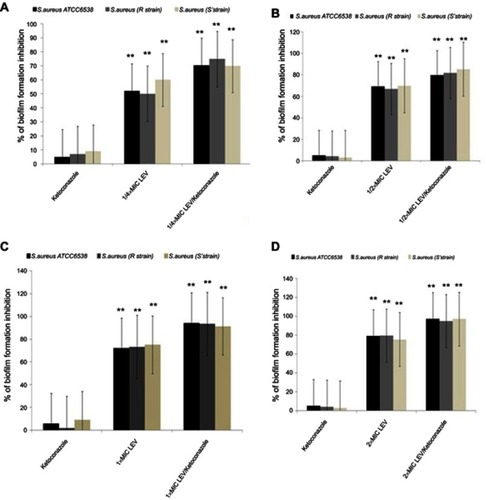
Figure 5 Effect of levofloxacin, ketoconazole, CCCP, and levofloxacin combination with ketoconazole or CCCP on the relative expression of efflux pump genes of Staphylococcus aureus (A) 5’ strain and (B) R strain. Error bars indicate the SD of three independent experiments. *Significant, P<0.05; **highly significant, P<0.01.
Abbreviations: CCCP, carbonyl cyanide m-chlorophenylhydrazone; LEV, levofloxacin; Nor, norfloxacin.
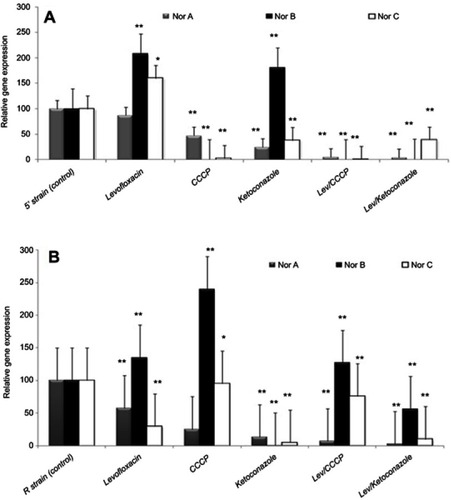
Figure 6 Effect of ethidium bromide, ketoconazole, CCCP, and ethidium bromide combination with ketoconazole or CCCP on the relative expression of efflux pump genes of Staphylococcus aureus (A) 5’ strain and (B) R strain. Error bars indicate the SD of three independent experiments. *Significant, P<0.05; **highly significant, P<0.01.
Abbreviations: CCCP, carbonyl cyanide m-chlorophenylhydrazone; EtBr, ethidium bromide; Nor, norfloxacin.
